
In view of the fact that Marieville has had a railway line since 1877, the village and parish of Saint-Césaire approach officers of the Montreal, Portland & Boston Railway and ask that the line be extended to the village of Saint-Césaire. In 1882, the company agrees, provided subsidies can be granted, to have the railway route now pass through this territory, which in 1887 receives its municipal charter as the Parish of Saint Michel de Rougemont. After the incorporation of this new municipality, residents will request that a station be erected nearby so they can benefit from the same services as those offered in Saint-Césaire. When the residents forming the core of the village of Rougemont ask the government to create a municipality for them in 1914, they will include the following justification in the various points of their request:
“The territory occupies a very picturesque site, with many orchards and vegetable fields being cultivated within its boundaries for commercial purposes. It is also served by a railway line of electric cars, which has a station there and connects the territory. On one side, in the village of Saint-Césaire, the track is under construction from this location to Granby, and on the other side, from Marieville to Montréal and passing through all the places in between. There is also a steam train service connecting the future village to Iberville and Saint-Jean on one side and to Saint-Hyacinthe and Sorel on the other.” |
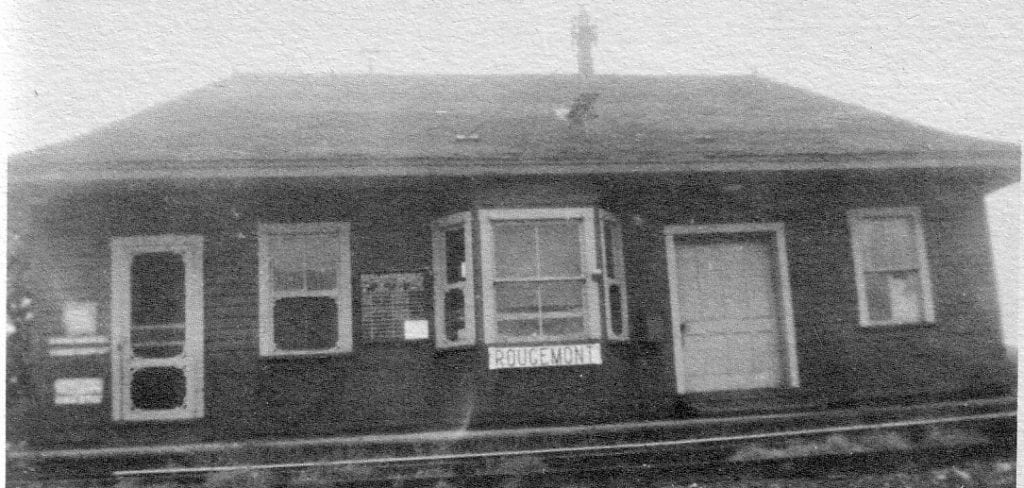
The station of the Montreal, Portland & Boston Railway in 1877. It will become the station of the Montreal & Southern Counties Railway in 1914.
This small, rectangular station is built of wood and covered in wooden siding. A four-slope roof extends all around as a shelter for ticket-holders waiting to board This view of the facade lets us see how the functions of station buildings were divided in this era. On the left of the photo is the entrance to the waiting room. In the middle, the station master’s office has a bay window extending outward for a view of what is happening on the platform and of when the trains arrive. On the other side is the room for storing shipments of goods. The station master does not live in such building. This station is positioned on the left side of the railway as you arrive from Montreal. It is located in front of Lot 515 in the cadastral map for the Village of Rougemont in 1916, now at an angle with Rang de la Petite-Caroline.
In 1913, the Montreal & Southern Counties Railway installed electric wiring along the tracks of the Central Vermont Railway, linking Marieville to Rougemont and Saint-Césaire over a distance of 3.67 miles.
To do so, they had to drive cedar utility poles into the ground alongside the track. These poles held the power lines and connectors overhead. The idea of using electric streetcars to transport passengers and goods in a rural area was truly unique to Quebec at the time. This type of rail service was normally used only for urban areas. In Rougemont, the electrified railway will be in operation from May 3, 1914, until November 24, 1951.
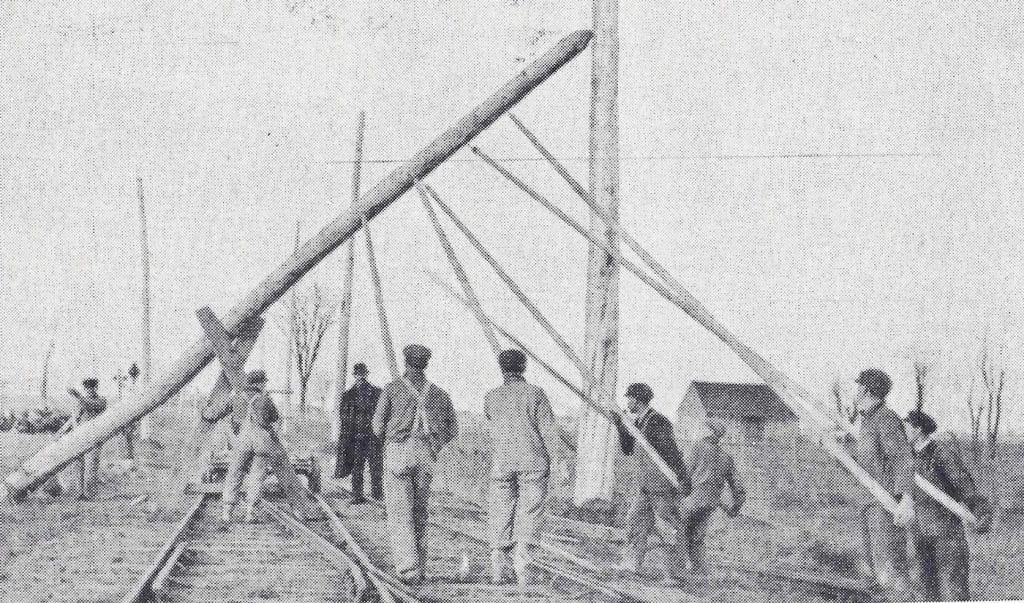
Railway workers laying utility poles along the railway on November 25, 1913 between Rougemont and Saint-Césaire.
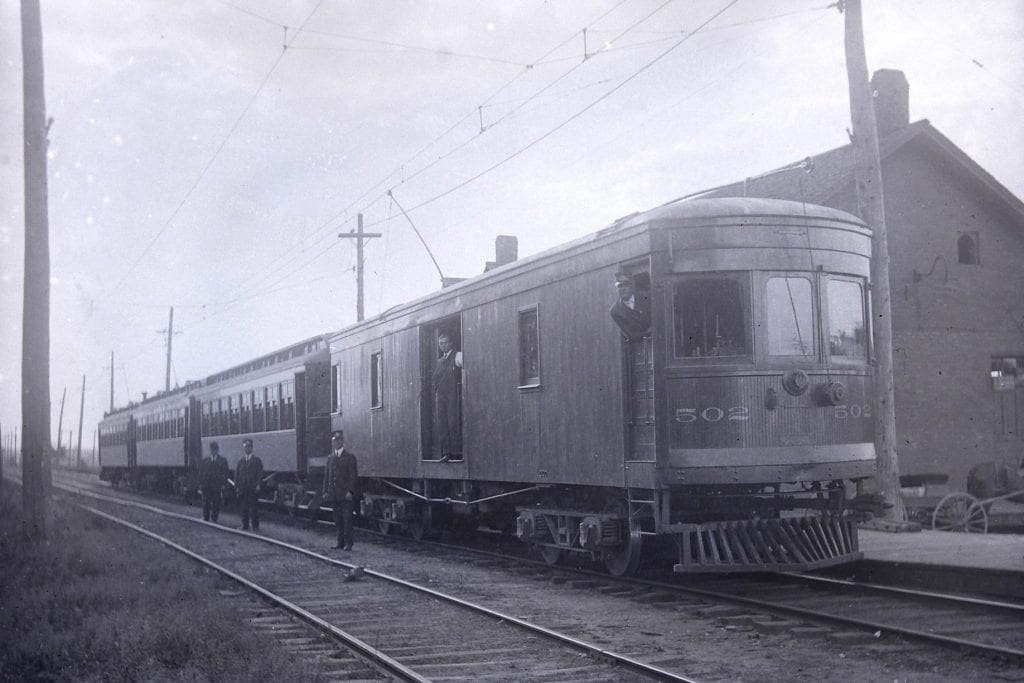
An example of an electric train operated by the Montreal & Southern Counties Railway going to Rougemont Station.
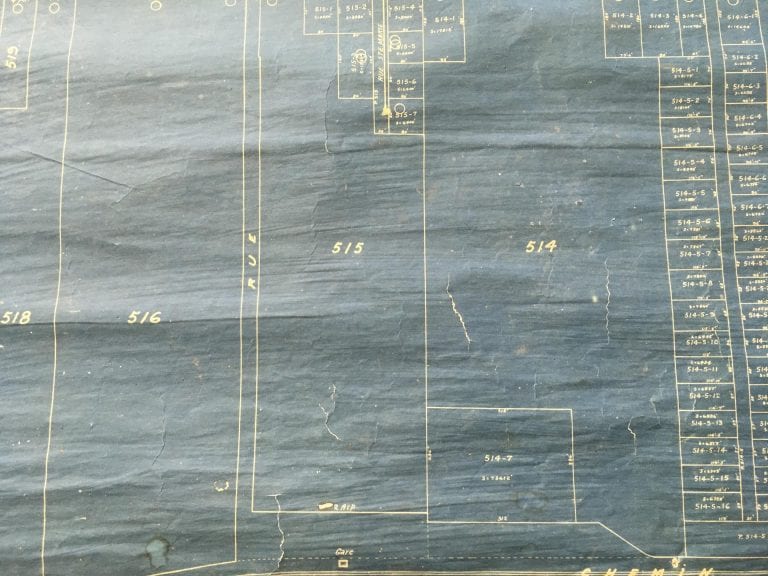
Part of a cadastral map of the Village of Rougemont in 1916. The location of the station (la Gare) is marked in the lower-left corner.
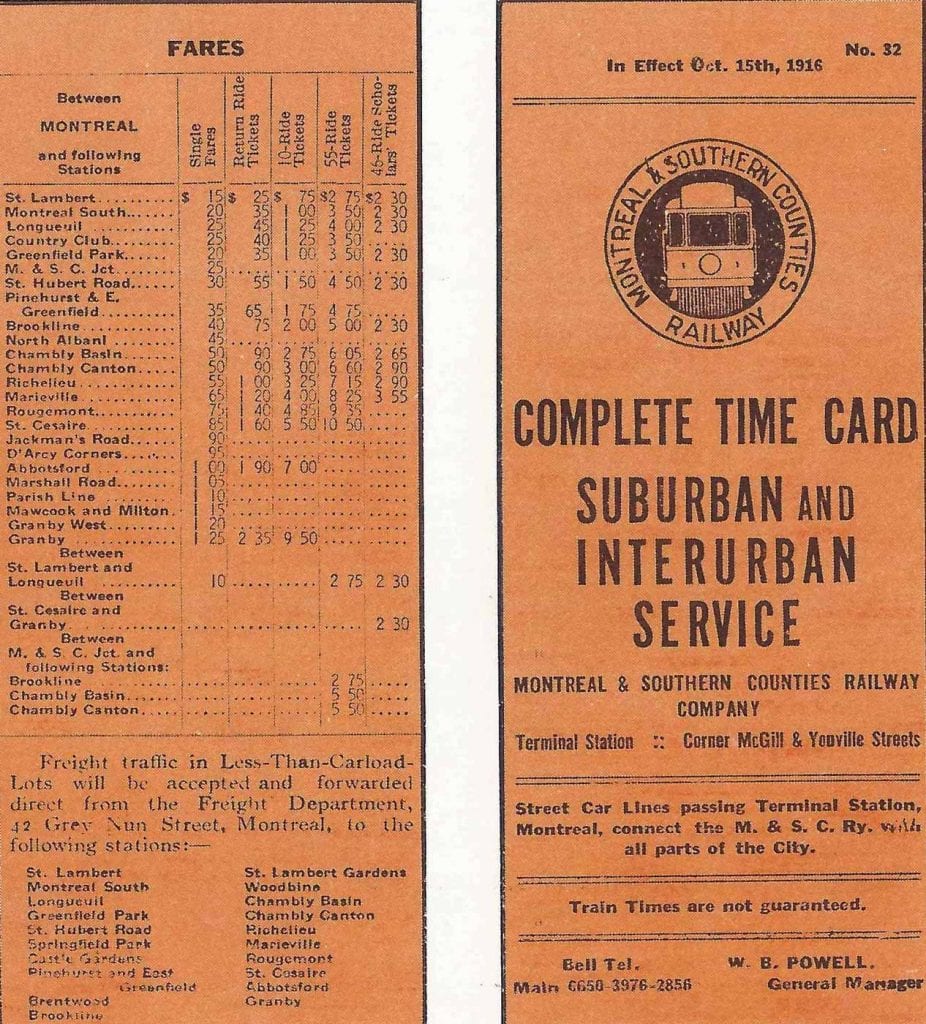
Fares between Montreal and Rougemont in 1916: 75 cents for one ticket or $9.35 for a booklet of 55 tickets.
Mr. Jules Bessette of Rougemont remembers that from the age of 13, he would ride the streetcar with his father in the summertime and bring products from their family farm and from other local producers to sell at the Marché Saint-Jacques in Montreal.
“The people of Rougemont used these electric streetcars to transport goods such as milk, vegetables, apples and berries from their farms and to sell them to people on the South Shore of Montreal and in the large markets of the metropolis. At the same time, this means of transport made it much easier to plan visits to family members and to enjoy the attractions of the big city. Even in winter, the streetcars were quite comfortable.”
This agricultural show, held annually by the Société d’Agriculture du Comté de Rouville in the 19th and 20th centuries, had an importance that is hard for us now to fully imagine. It was the yearly meeting place of the region’s best cattle and poultry breeders, dairy farmers, and fruit, vegetable and flower growers. Naturally, there would be a strong showing of the domestic arts as well, courtesy of the many farm women’s clubs, the Cercles de Fermières. Each exhibitor hoped to win the first prize in their category. It was also the social event of the year. For a few days, thousands of visitors from all the towns and farms of Rouville County, and from the larger surrounding region, would gather at the fair. When the fair was in progress, the railway company would increase the speed and frequency of train service to Rougemont Station. For decades, the electric streetcar was a popular and efficient way for visitors and exhibitors to visit this lively summertime event in Rougemont.
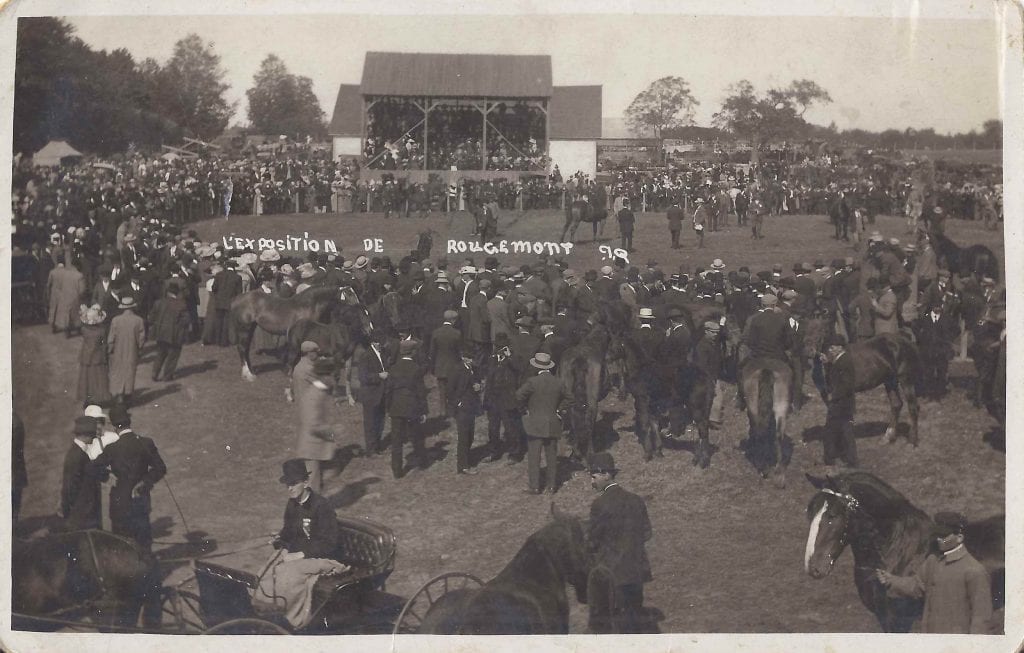
Une partie de la foule à l’Exposition agricole du comté de Rouville à Rougemont en 1913.
Location of the pannel on La Route des Champs



Research and text
Gilles Bachand, historian
Société d'histoire et de généalogie des Quatres Lieux
References and photographs (2020)
Archives of the Société d’histoire et de généalogie des Quatre Lieux
Archives of the Société d’histoire de la Seigneurie de Monnoir